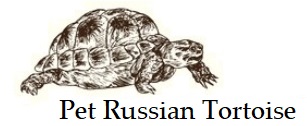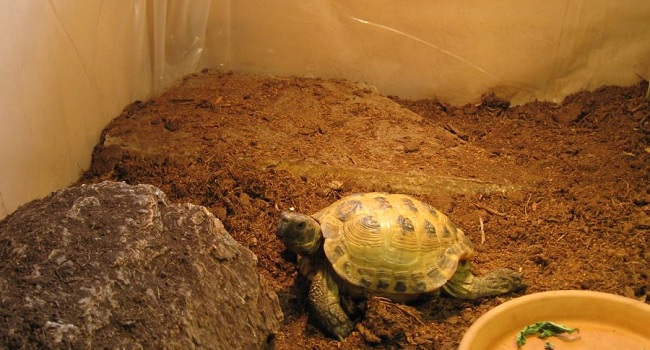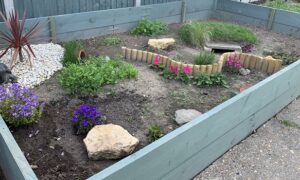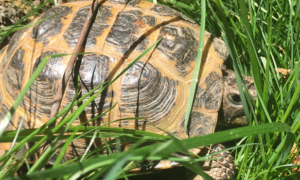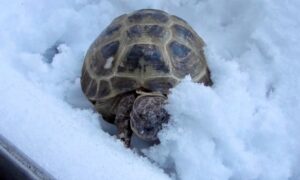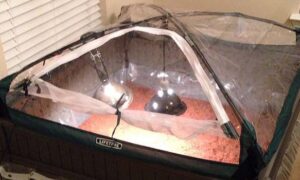When choosing the best bedding for a Russian tortoise, there are many options you to choose from. Whether you are standing in the isle at your local pet store or browsing the internet, it can be overwhelming as to what is safe for your tortoise.
However, one of the best substrates for Russian tortoises is going to be organic top soil. You’ll find many different brands of organic top soil. Look for an option that does not have any perlite, miracle grow or any other additives. You also want to be careful to find a top soil that does not have any fertilizers. Many organic top soils include chicken poo fertilizer, which can be a little strong for a Russian tortoise and the indoor tortoise enclosures.
Benefits of Organic Top Soil for Russian Tortoise
Organic top soil holds humidity well, creating a good environment to reduce the risk of pyramiding. When kept hydrated, the soil will not create dust that can irritate a tortoise’s eyes.
When using organic top soil, you don’t have to worry about additives that are unsafe for your tortoise.
Organic top soil is also a natural substrate that is great for digging, and Russian tortoises are natural diggers.

Alternatives to Organic Top Soil
If you can’t find an organic top soil for Russian tortoise enclosure that doesn’t include additives, there are alternatives that you can use.
- Non-organic top soil (plain soil)
- Peat moss
- Coconut coir
- Cypress mulch
- Orchard bark
Substrates to Avoid
When setting up an enclosure for a Russian tortoise, you do not want to use cedar or pine based substrate. These wood substrates can emit oil and aromatic compounds that can cause skin irritations, respiratory tract problems and a lower reproductive success rate.
Although some claim shredded aspen bedding is safe to use with Russian tortoises, it’s not necessarily the best choice. Aspen does not emit the same oils as pine and cedar, but it is not necessarily the most natural for tortoises.
Play sand, calcium sand and other reptile-branded sands are not the best substrate options for Russian tortoises, either. Sand can cause impaction, as well as possible skin and eye irritation. If you want to add sand to your enclosure, do not add plain sand. Mix the sand with soil or coconut coir.
In some cases, what happens in the wild doesn’t always work in captivity. For example, where Russian tortoises may spend some time on sandy substrates in the wild, in captivity we are not 100% mimicking the native environment with native foods and such. Plus, in captivity, a tortoise could be stuck on sand or aspen chips 24/7, whereas in the wild, they will find other substrate options to spend their day and nights.
